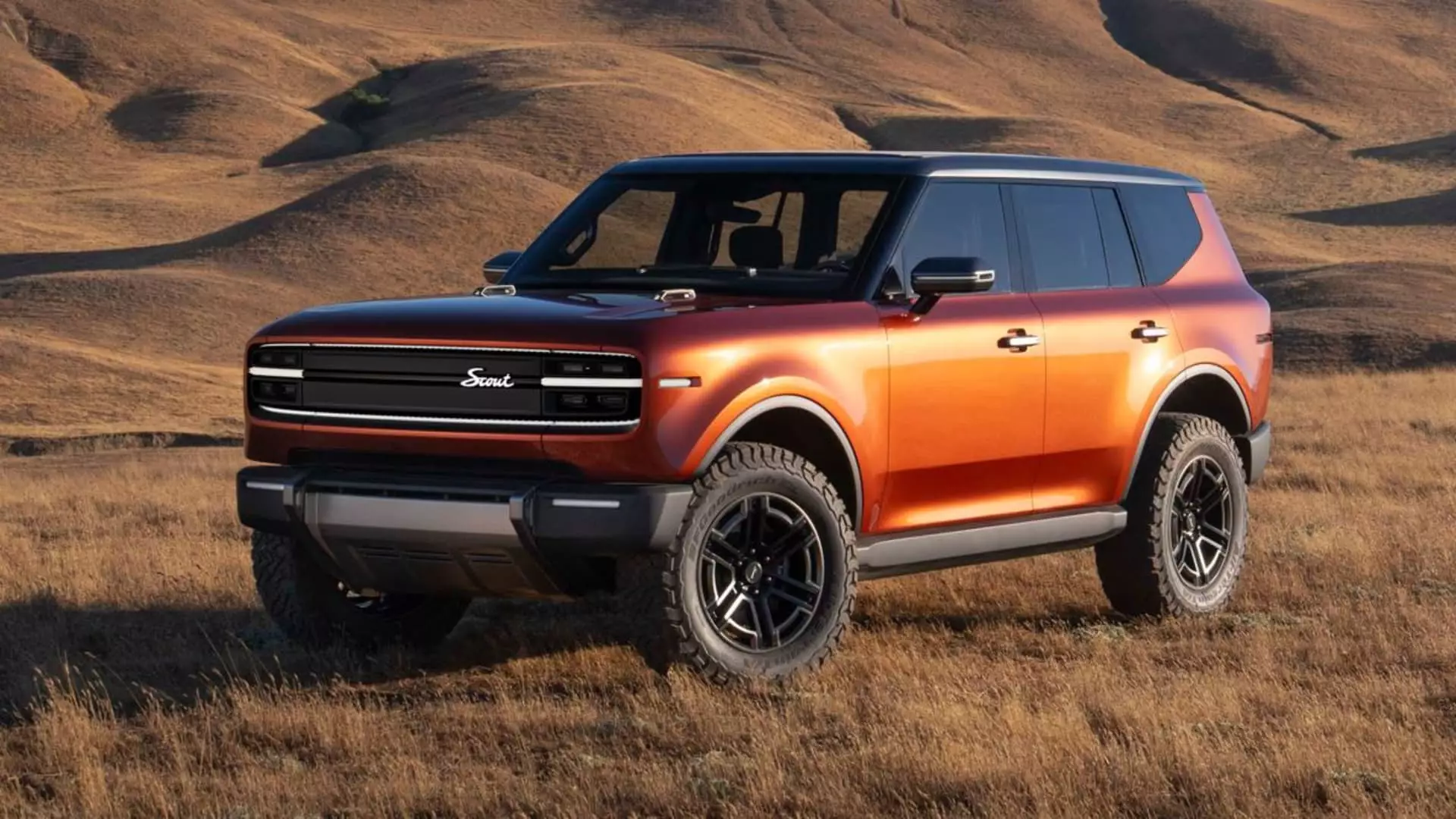Scout Motors, a resurrected nameplate from American automotive history, is making waves in the electric vehicle (EV) sector with significant announcements regarding its inaugural product lineup. Originally produced between 1961 and 1980, the Scout name embodies a legacy of rugged utility vehicles. However, today’s automotive landscape calls for a different approach. Backed by Volkswagen, Scout is positioning itself to capture a market segment eager for electrification while also adapting to the current realities facing EV manufacturers—specifically, slower adoption rates and high production costs.
Scout’s pivot to include extended-range electric vehicles (EREVs) as a part of its offerings marks a strategic departure from an initial focus on purely electric models. CEO Scott Keogh, who has deep roots in the automotive industry and previously helmed VW operations in the U.S., articulates the rationale behind this change. The reality of the EV market’s slower growth and consumers’ hesitance to embrace full electrification has prompted Scout to provide a “backup plan” in the form of EREVs. These vehicles not only enhance flexibility but also serve as an entry point into the world of electrification for consumers who might be reluctant to adopt entirely electric vehicles.
The EREV concept combines traditional internal combustion engines with electric powertrains, allowing vehicles to function effectively even when battery resources are depleted. This multifaceted approach aims to alleviate potential anxieties regarding range—one of the key barriers to broader EV acceptance. By transitioning to EREVs, Scout is acknowledging consumer sentiment while holding steadfast to a commitment to electrification.
The operational strategy for Scout Motors is ambitious, with plans to achieve profitability within the first year of production at its new $2 billion facility in South Carolina. This site is projected to have the capacity to produce up to 200,000 vehicles annually, focusing on two critical segments: full-size pick-up trucks and SUVs. This strategic choice aligns with market demand, targeting a profitable sector that has been historically lucrative within the American automotive landscape.
Keogh emphasizes that both types of vehicles—the Traveler SUV and Terra pickup—are designed to tap into the lucrative profit pools of the U.S. automotive market, which is currently dominated by traditional combustion engine vehicles. Buying patterns indicate that vehicles with higher profit margins like full-size SUVs and trucks can provide a balanced approach to profitability while evolving the brand towards an electric future.
Direct-to-Consumer Sales Model
In a strategy that departs from traditional auto sales structures, Scout Motors plans to sell its vehicles directly to consumers instead of relying on a franchised dealer network. This direct-to-consumer model not only enhances customer engagement but also allows Scout to maintain closer control over brand representation and customer experience. Furthermore, this approach can potentially lower the telling price for consumers, a move that could be pivotal in attracting those hesitant about transitioning to electric or hybrid models.
The pricing strategy remains competitive, with initial estimates placing the Traveler SUV and Terra pickup between $50,000 and $60,000, inclusive of available incentives. Such pricing will be critical as Scout looks to carve out its niche in a market that is increasingly populated with new entrants and traditional automotive competitors alike.
Technological advancements are at the heart of Scout’s vision for the future. The vehicles are equipped with more than 500 miles of range for EREVs and about 300 miles for fully electric models, addressing one of the major concerns that potential EV buyers cite: range anxiety. The incorporation of North American Charging Standard and 800-volt architecture will enable robust charging capabilities, further solidifying the vehicles’ appeal.
Keogh’s optimism surrounding Scout’s approach is compelling—given that many current EV manufacturers are facing profitability challenges. Rivian and Lucid, for instance, have struggled to maintain healthy financial states while delivering vehicles, often incurring heavy losses. In contrast, Scout’s roadmap strives for operational success and market relevance, evidencing a notably calculated approach to a rapidly evolving industry.
Scout Motors stands at a crossroads of tradition and innovation. By resurrecting a storied brand and positioning it within the context of modern electrification, Scout has the potential to attract a broad audience of consumers eager for a blend of functionality and sustainability. As the company moves forward with production, its ability to adapt to market dynamics while offering compelling products will be crucial in distinguishing itself in the ever-competitive EV landscape. The future might well see Scout not only bring back a nostalgic name but do so with a strong commitment to redefining automotive reliability through electric power.

